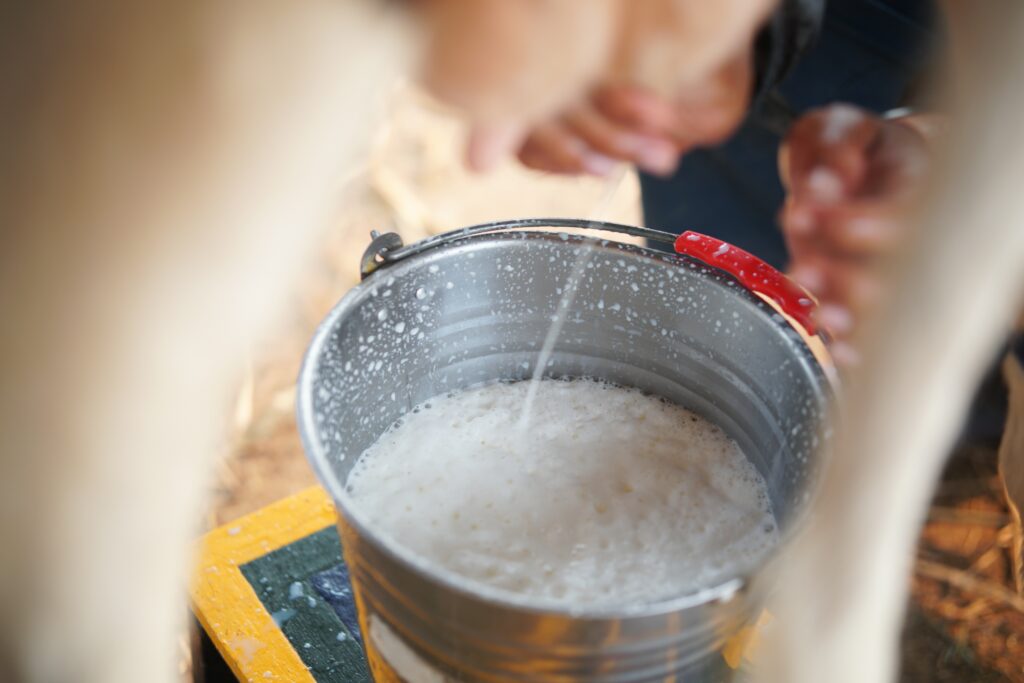Public health officials in Utah and Wyoming are investigating separate outbreaks of foodborne illness from raw milk consumption. These outbreaks come at a time when raw milk is growing in legality.
The Salt Lake County Health Department in Utah confirmed that 14 people have been infected with Campylobacter, a bacteria that causes foodborne illness from the consumption of raw or undercooked food. Of these individuals, all but two reported drinking raw milk prior to their illnesses. The affected patients’ ages range from two to 73 years old, with one requiring hospitalization. As of Wednesday, October 11, the source of the raw milk in Salt Lake County remains undetermined, prompting the department to advise the public to consume only pasteurized milk.
Similarly, in Wyoming, the Department of Health confirmed that five people — one adult and four children — fell ill after ingesting raw milk purchased from Slow Food in the Tetons online market. Two children from this group were hospitalized. These patients, residing in Teton and Lincoln counties, were found to be infected with both Campylobacter and E. Coli bacteria. State investigators linked the illnesses to raw milk or its products but have not yet identified the specific vendor involved.
Related: Is Canola Oil Banned in Europe? Unraveling the Truth
Concern Growing Amid Rising Legality of Raw Milk
State legislation regarding the sale of raw milk is witnessing a shift, with 27 states now permitting the sale of raw milk directly to consumers. While there are multiple avenues through which raw milk can legally be sold — from retail spaces to direct farm-to-consumer transactions or through herd share schemes — each of these distribution methods has its own set of regulations, primarily to safeguard the buyer. As the demand for raw milk increases, experts anticipate a further rise in states broadening their legislation pertaining to its sale.
According to information from the 2016 Food Safety Survey and the 2019 Food Safety and Nutrition Survey conducted by the US Food and Drug Administration (FDA), 4.4 percent of American adults reported consuming raw milk in the past year.
Many individuals believe that raw milk offers superior health advantages over pasteurized milk. However, this choice is not without its dangers since foodborne illness from raw milk is a real risk. Nutrition specialists warn that consumption of unpasteurized milk can be potentially fatal in certain situations.
What Is Raw Milk?
Raw milk is dairy that hasn’t undergone the pasteurization process. Simply put, when milk is transferred directly from the cow’s udder to the customer, it’s categorized as “raw.” On the other hand, pasteurized milk is treated by heating every particle to a specific temperature that inhibits bacterial growth.
This heat treatment is designed to render milk and its derivatives safe for humans by minimizing potentially harmful bacteria. It also extends milk’s shelf life by decreasing spoilage bacteria. Routine pasteurization of milk began in the US in the 1920s and had become the norm by 1950, primarily to mitigate contamination and curb the incidence of human illnesses.
Raw Milk vs. Pasteurized Milk
A prevailing reason many opt for raw milk is the belief that it’s a healthier and more nutritious alternative to pasteurized variants. However, the majority of experts believe this notion is exaggerated.
While it’s true that pasteurization can slightly reduce some vitamins in milk, such as vitamin B12, vitamin E, vitamin C, folate and vitamin B2, the overall impact on milk’s nutritional content is negligible. Furthermore, while raw milk might possess marginally higher concentrations of certain vitamins, pasteurized milk offers a greater assurance of safety.
Raw milk can harbor harmful pathogens including Campylobacter, Cryptosporidium, E. coli, Listeria, Brucella and Salmonella. As seen in the recent outbreaks in Utah and Wyoming, consumption of these pathogens can result in foodborne illness from raw milk.
Symptoms of such foodborne illnesses include diarrhea, nausea, fever, vomiting and lethargy. Severe cases might lead to complications like kidney and brain damage, extreme dehydration, or even prove fatal. While abstaining from raw milk won’t guarantee immunity from foodborne illnesses, it can certainly reduce the risk.
Past Foodborne Illness Outbreaks
Historically, during the 1930s when pasteurization wasn’t mandatory, milk-related disease outbreaks accounted for about 25 percent of all outbreak incidents. Fast forward to the early 21st century, when pasteurization became obligatory, milk products were implicated in less than one percent of such outbreaks. This decline can largely be attributed to the pasteurization process. Nonetheless, instances of people falling ill due to foodborne illness from raw milk persist.
In 2005, 18 cases of E. Coli infections stemming from raw milk were reported in Oregon and Washington, primarily affecting children under 14. Five of these cases required hospitalization. Between 2007 and 2009, 30 instances of foodborne illness in the US were directly linked to raw milk consumption.
The Centers for Disease Control and Prevention (CDC) stated that raw dairy products are 840 times more likely to induce illness than their pasteurized counterparts.












Join or login to leave a comment
JOIN LOGIN